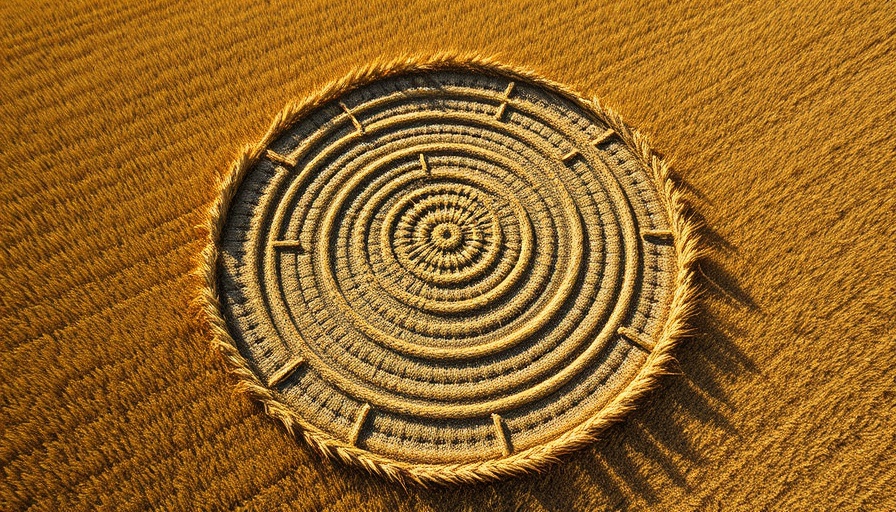
Understanding Crop Circles: A Practical Perspective
When soaring above rural landscapes, one might catch sight of peculiar patterns forming in fields—designs that pique curiosity and spark theories. Often misconstrued as alien art, crop circles' origins are more intriguing and down-to-earth than one might think.
The Origins of the Crop Circle Myth
The myth surrounding crop circles finds its roots in the 1970s in England, when intricate shapes became a talking point due to their seemingly inexplicable appearances. Farmers and locals were mystified by these formations, leading to a surge in hopes of extraterrestrial encounters. However, two men later disclosed their involvement in creating many of these patterns, effectively dispelling some mystery but not the fascination they hold.
Decoding the Real Causes of Crop Circles
Talon Becker, an agricultural specialist, provides clarity on the real reasons behind crop circles. It turns out that many formations can be attributed to everyday farming practices:
- Cutting for Silage: Farmers often cut certain sections of their fields for silage based on moisture levels. These cut sections can create geometric patterns when viewed from above, as wet areas are cut while dry areas are left standing.
- Tile Lines: Agriculture requires good drainage, and tile lines installed below fields can lead to varying crop growth patterns. In wet years, these lines can cause unusually lush crop circles.
- Centerpoint Irrigation: Many modern farms utilize centerpoint irrigation systems that naturally create circular crop patterns as they distribute water uniformly.
- Natural Causes: Weather phenomena, such as lightning, can damage crops in localized areas, creating unexpected patterns in fields.
- Human Creativity: Some circles are simply pranks. Creative individuals have made a hobby out of designing elaborate patterns, adding to the intrigue surrounding crop circles.
The Cultural Impact of Crop Circles
Despite the practical explanations, crop circles continue to captivate imaginations worldwide, serving as modern folklore. The blend of art, nature, and mystery keeps these patterns in conversations, even in our tech-driven world. Recognizing their significance enhances appreciation for rural creativity and the agricultural landscape.
Applying the Knowledge to Your Own Backyard
For homeowners and gardening enthusiasts, understanding the origins of crop circles can inspire creativity in landscape design. Consider experimenting with geometric patterns in your garden. Just as farmers employ various techniques for cultivating crops, you too can create designs that enhance the aesthetic appeal of your home.
Wrap-up: Inviting Creativity into Your Space
As we unravel the captivating mystery of crop circles, we find that the answer lies not just in nature, but within our own abilities to create and innovate. The humble crop circle can serve as an invitation to engage with our environments creatively and thoughtfully.
So next time you see a crop circle, remember that its roots are in more than just the soil but in the creativity of human spirit and sustainable practices! Why not apply these insights practically in your own home improvement projects?
 Add Row
Add Row  Add
Add 




Write A Comment